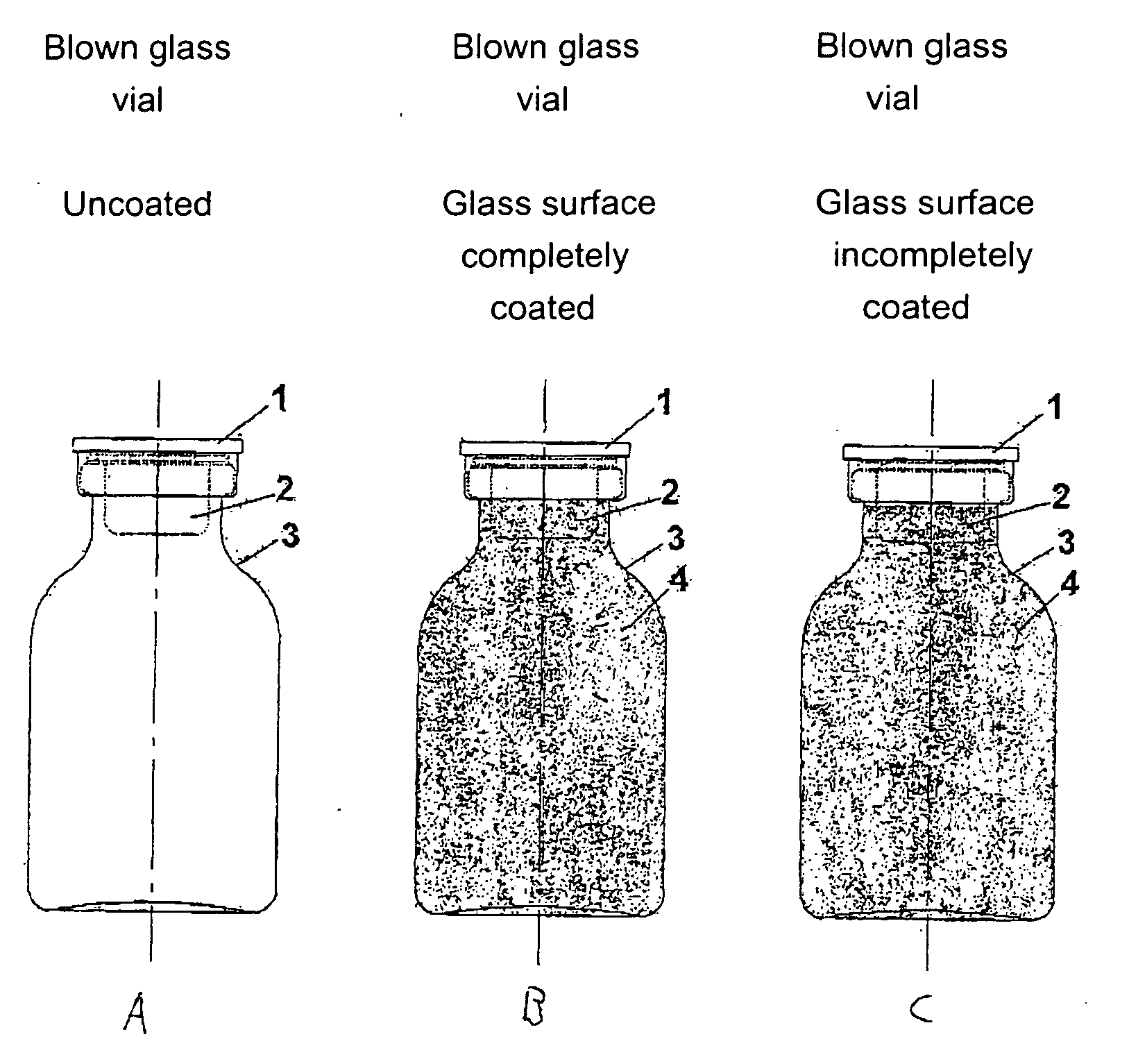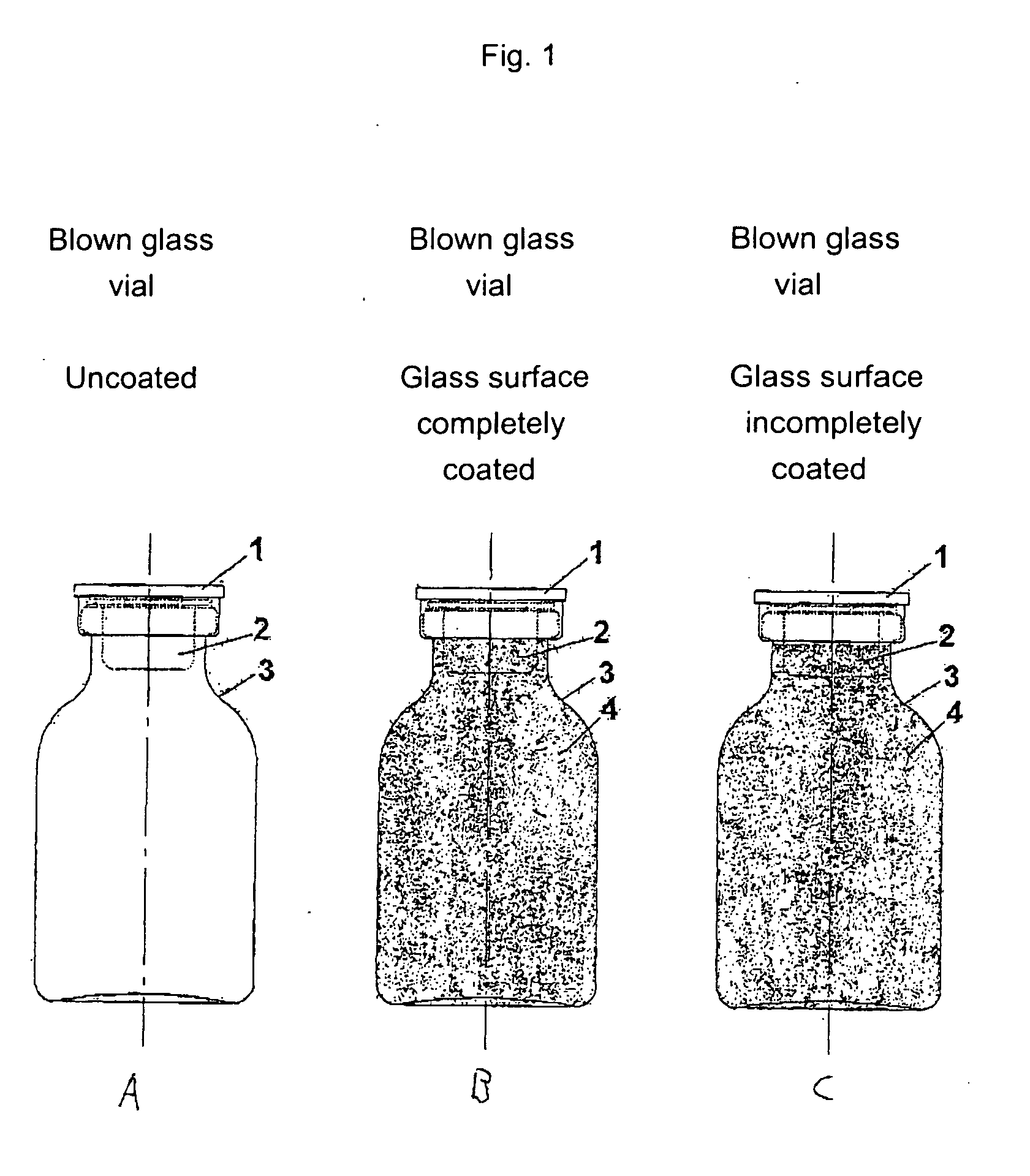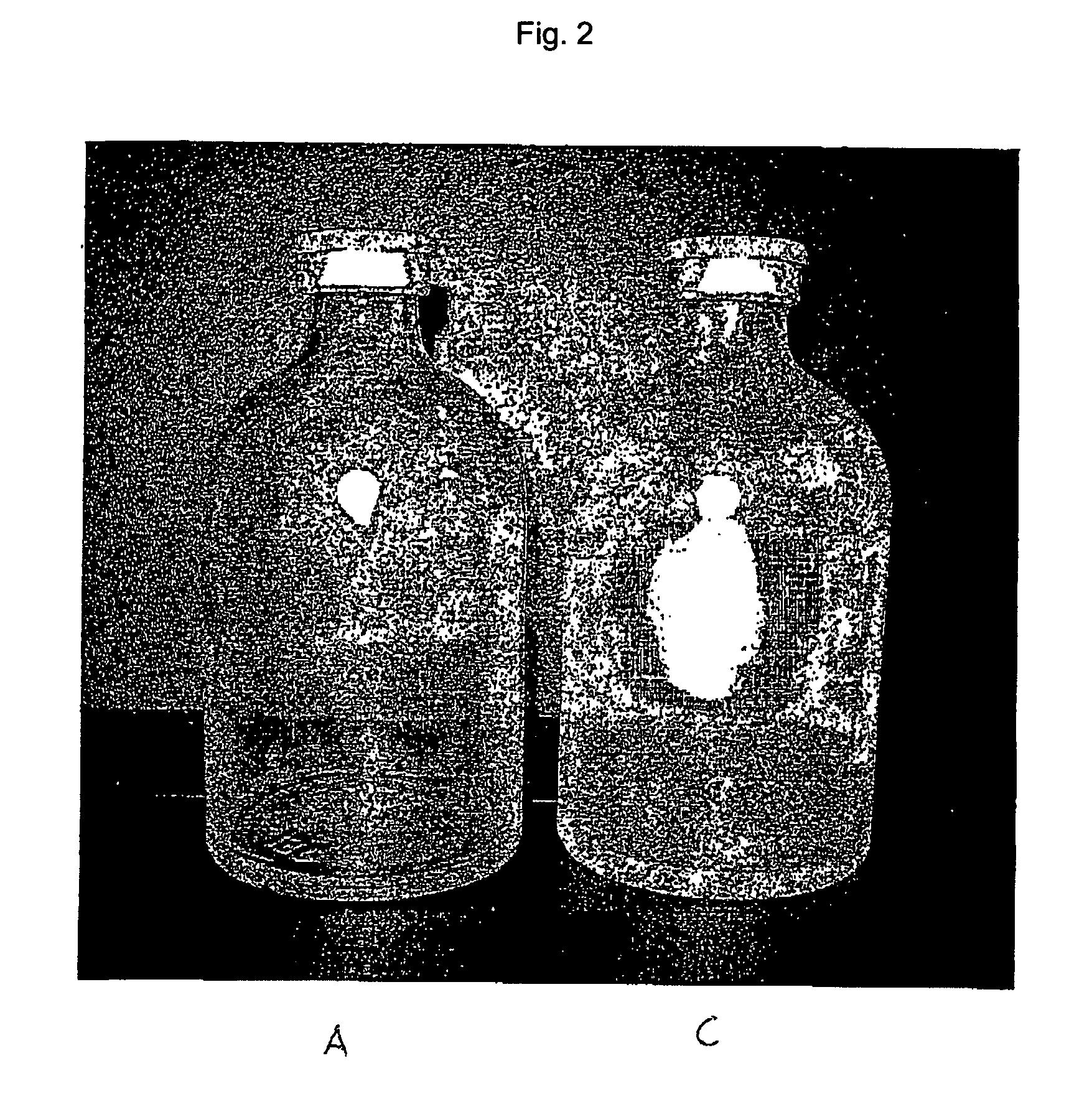Safety containers for biologically active substances and method for producing said container
a technology of biologically active substances and safe containers, applied in the direction of rigid containers, nuclear engineering, transportation and packaging, etc., to achieve the effect of increasing or high fracture strength
- Summary
- Abstract
- Description
- Claims
- Application Information
AI Technical Summary
Benefits of technology
Problems solved by technology
Method used
Image
Examples
exemplary embodiment 1
[0458] The starting point for the lacquering are the separate vials coming from the labeling. Depending on the amount of active compound to be filled, the size of the vials is alternatively 20 H, 30 H, 50 H, 75 H and 100 H (according to DIN 58366; in each case filled with 50 mg (vials size 20 H or 30 H according to DIN 58366), 1 g (vial size 50 H or 75 H according to DIN 58366) and 2 g (vial size 100 H according to DIN 58366) of sterile crystalline cyclophosphamide. The kind of glass of the vials is alternatively glass I or III. A chain conveyor picks up the vials on the bottle head (pickup can, for example, take place a.) pneumatically by means of suction apparatus or gripping devices or b.) mechanically by means of clamping or mechanically controlled gripping devices) and transports them to a spray booth, where they are coated in an “omega loop”. As mechanical protection against overspray, the vials pass through a labyrinth before and after the spray booth. In the spray booth, the...
exemplary embodiment 1a
[0483] As exemplary embodiment 1, with the difference that unlabeled vials are lacquered. Labeling is carried out after drying and before delivery to the cardboard box packing unit.
exemplary embodiment 2
[0484] The starting point for the lacquering are the isolated vials coming from labeling, the lacquering of the vials alternatively taking place here by means of a spray gun. Depending on the amount of active compound to be filled, the size of the vials is alternatively 20 H, 30 H, 50 H, 75 H and 100 H according to DIN 58366; in each case filled with 50 mg (vials size 20 H or 30 H according to DIN 58366), 1 g (vial size 50 H or 75 H according to DIN 58366) and 2 g (vial size 100 H according to DIN 58366) of sterile crystalline cyclophosphamide. The type of glass of the vials is alternatively glass I or III.
[0485] The lacquer as set forth in exemplary embodiment 1 is used, it optionally being possible to adjust its viscosity in a manner appropriate to use in a spray gun. A spray booth at underpressure is also needed in this method (with labyrinth). The vials are rotated during the lacquering process. A rhythmical lacquering process in which the vials remain standing in front of the ...
PUM
| Property | Measurement | Unit |
|---|---|---|
| thickness | aaaaa | aaaaa |
| fracture strength | aaaaa | aaaaa |
| shatterproof strength | aaaaa | aaaaa |
Abstract
Description
Claims
Application Information
 Login to View More
Login to View More - R&D
- Intellectual Property
- Life Sciences
- Materials
- Tech Scout
- Unparalleled Data Quality
- Higher Quality Content
- 60% Fewer Hallucinations
Browse by: Latest US Patents, China's latest patents, Technical Efficacy Thesaurus, Application Domain, Technology Topic, Popular Technical Reports.
© 2025 PatSnap. All rights reserved.Legal|Privacy policy|Modern Slavery Act Transparency Statement|Sitemap|About US| Contact US: help@patsnap.com



